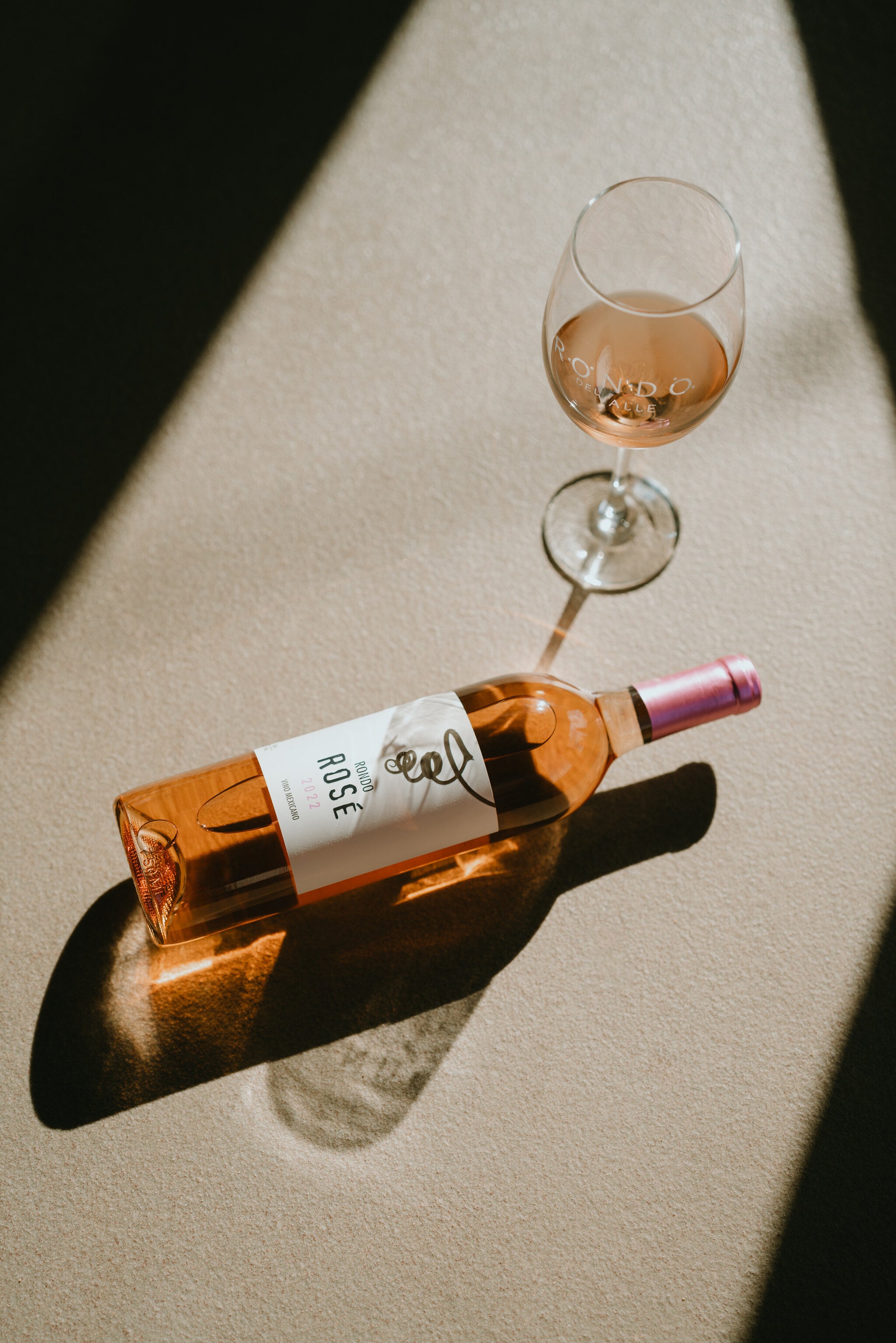The main difference in the production process between rosé wine and red wine lies in the duration and intensity of contact between the grape skins and the must during fermentation.
Here is a comparison of both processes:
Red wine production:
- Grape selection: Specific red grapes intended to produce red wine are selected.
- Maceration: The grapes are crushed and left in contact with the skins for an extended period, which can last from a few days to several weeks. During this time, the pigments and aromatic compounds from the skins are transferred to the must, giving the wine its characteristic color, flavor and aroma.
- Fermentation: After maceration, the must ferments along with the skins and seeds. During this process, sugars are converted to alcohol, and tannins and other compounds are extracted from the skins, giving red wine its structure and complexity.
- Pressing: Once fermentation is complete, the mixture of must, skins and seeds is pressed to extract the wine. The wine is separated from the solids and transferred to barrels or other containers for aging.
Rosé wine production:
- Grape selection: Red grapes are used, but the process may vary depending on the production method.
- Maceration: In some methods, grapes undergo a short maceration, where the must is in contact with the skins for a short period of time, usually a few hours to a day. This allows limited extraction of color and aromas from the skins, resulting in a characteristic pink color.
- Fermentation: After maceration, the must ferments separately from the skins, resulting in a wine with less extraction of tannins and pigments than red wine.
- Pressing: Once the desired level of color and flavor extraction is reached, the must is pressed and separated from the skins. Rosé wine can be fermented in stainless steel tanks or other containers, and then bottled for consumption.
In summary, the main difference between the production process of rosé wine and red wine is the duration and intensity of contact between the grape skins and the must during fermentation, which results in wines with characteristics of color, aroma and distinctive flavor.
Our “Rosé” wine, which we produce in Rondo del Valle, is made with Grenache and Cabernet Sauvignon grapes, offering a unique sensory experience. Here are some typical features you might expect in your experience:
- Color: Typically a pale pink or salmon pink color, bright and attractive.
- Aromas: Aromas of stone fruits such as peaches, apricots and plums stand out, as well as fresh and juicy notes of strawberries. These fruity aromas are combined with subtle floral nuances.
- Taste: In the mouth, fresh and lively flavors are experienced, with a pleasant acidity that highlights the citrus notes of mandarin. It can also have a slight sweetness that balances the acidity and enhances the fruit.
- Body: It usually has a light to medium body, which makes it very refreshing and easy to drink.
- Finish: The finish is clean and refreshing, with a pleasant persistence that invites another sip.
As for pairing recommendations, its versatility makes it perfect to accompany a variety of dishes:
- Fish and shellfish: Its freshness and lightness complement very well the delicate flavors of white fish, shellfish and crustaceans.
- Cheeses: It goes especially well with soft and creamy cheeses, such as brie or goat cheese, but it can also accompany semi-hard cheeses.
- Meats: Although it is not so common to pair rosé wines with meats, their acidity and lightness can be a good counterpoint for white meats such as chicken or turkey, as well as for some pork preparations.
In short, this rosé wine from Valle de Guadalupe is an excellent option for those looking for a fresh and vibrant experience, both in aromas and flavors, and its versatility makes it an ideal accompaniment to a wide variety of dishes.



The vine is about to arrive in the Guadalupe Valley
La Importancia y Características de una Cava de Vinos Subterránea